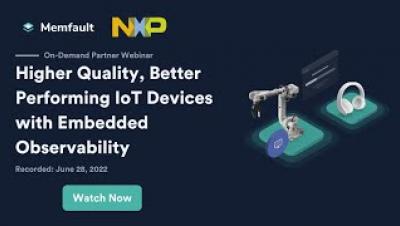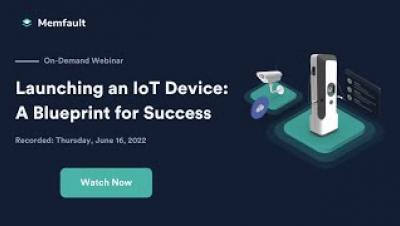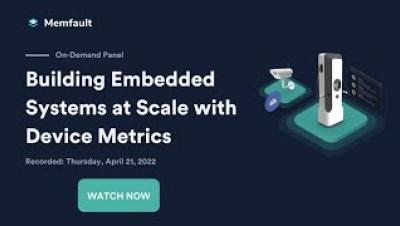Operations | Monitoring | ITSM | DevOps | Cloud
Memfault
How to Build and Maintain IoT Management Systems for Scale
Debugging Embedded Devices in Production
Integrating Memfault with Blecon Bluetooth Devices
I’m Donatien, co-founder of Blecon, where we provide device connectivity to the Internet using only Bluetooth. In my previous lives working in the IoT division at Arm and my previous start-up, our teams constantly wrestled with debugging firmware bugs on remote devices.
Saving bandwidth with delta firmware updates
Firmware update capability has become a must-have for most devices. Whether to add new features after launch, fix bugs, or urgently patch a security hole, firmware updates gives modern teams the flexibility they need to move fast and react to a changing environment. I’ve written at length about firmware updates in the past, including on Interrupt with a Firmware Update Cookbook and a post about code signing, and even recorded a webinar on the topic.
NXP & Memfault: Higher Quality, Better Performing IoT Devices with Embedded Observability Webinar
Launching an IoT Device: A Blueprint to Success
Building an On-Device Embedded Testing Library
There are too few C/C++ testing libraries designed for embedded devices. The traditional libraries are not designed for constrained resources and rely on host functionality like a filesystem or standard output. In this post, I detail why I’ve decided to design a new testing library for microcontrollers and cover the rationale, design choices, and thoughts on the prototype. Like Interrupt? Subscribe to get our latest posts straight to your mailbox.
Selecting Your Next Project's MCU
Selecting the best chip can be tedious work but the best chip can save you a lot of time and money, and might even be faster! So should you spend time finding the best? I have some words on the topic. If a primary goal of your next project is to learn a new MCU, you want to create something easily reproducible, or if there will be only one machine building the project, then I recommend you to go with the chip you want to learn, the chip most readily available, or the easiest one to work with.








